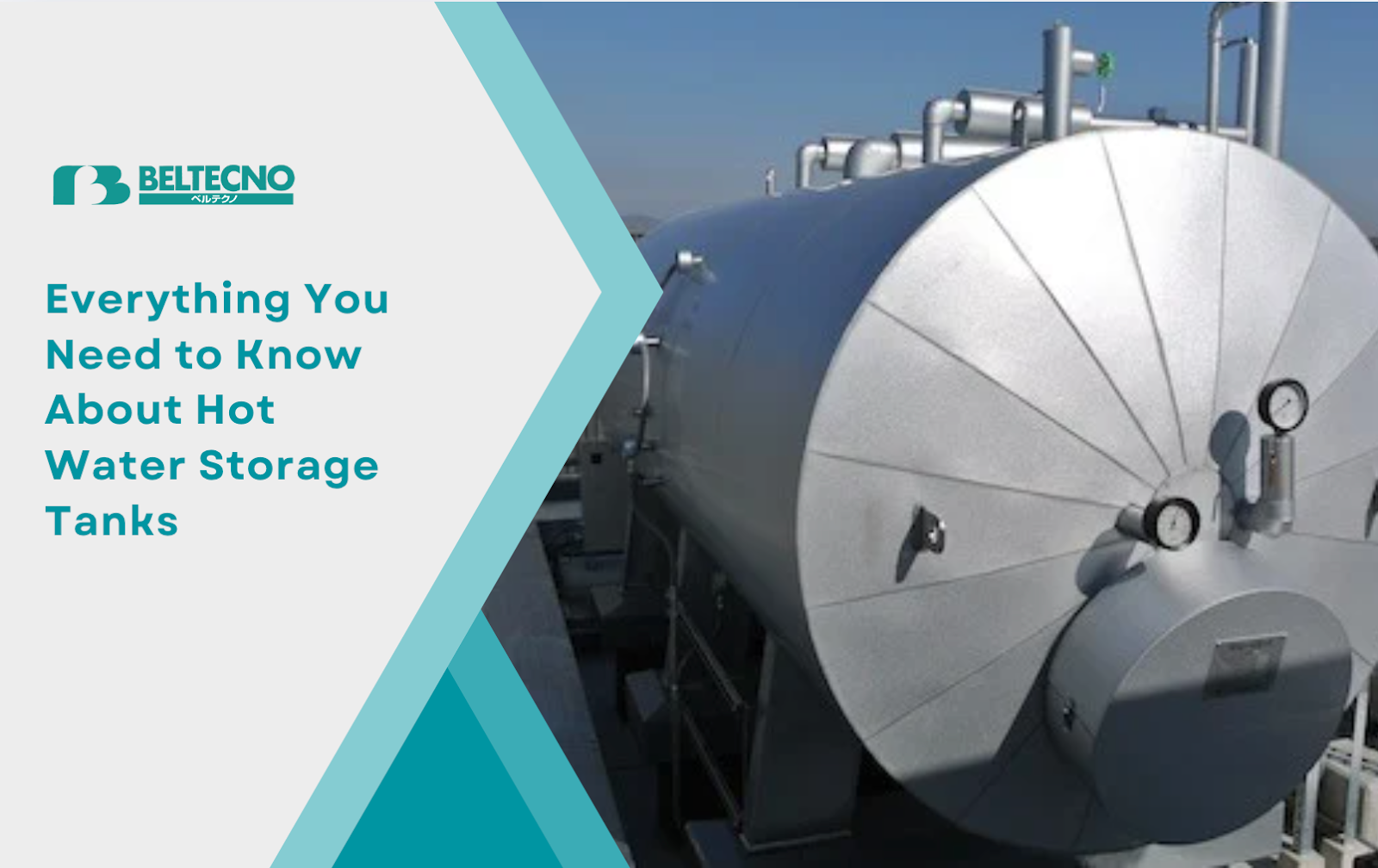Everything You Need to Know About Hot Water Storage Tanks

Hot water storage tanks are essential for industries that rely on efficient thermal energy management. These tanks ensure consistent temperature control, optimize energy usage, and support seamless operations across a wide range of sectors.
From industrial processes to renewable energy systems, hot water storage tanks provide reliable and sustainable solutions for storing and utilizing thermal energy. Available in both vertical and horizontal configurations, they cater to diverse operational needs and spatial constraints.
In this blog, we’ll delve into the key features, applications, and benefits of hot water storage tanks and their role in enhancing efficiency and sustainability in various industries.
What is a Hot Water Storage Tank?

A hot water storage tank is a pressure vessel specifically designed to store hot water at a controlled temperature and pressure.
Beltecno manufactures both vertical and horizontal hot water tanks, offering versatile solutions for industries with space and operational constraints. The tanks are constructed using premium stainless steel, ensuring durability, corrosion resistance, and hygiene qualities ideal for industrial applications.
Features of Beltecno’s Hot Water Storage Tanks
Beltecno’s hot water storage tanks are engineered to meet the unique demands of respective industries. Here’s what makes them the ideal choice:
1. High-Quality Seamless Design
Beltecno uses fully automated longitudinal and joint welding processes to manufacture tanks. This ensures a high-quality, seamless design that eliminates leaks, enhances structural integrity and provides long-lasting performance.
2. Premium Stainless Steel Construction
Beltecno’s tanks are made from stainless steel, offering the following advantages:
-
Corrosion Resistance: Withstands exposure to high temperatures and water pressure for a certain period.
-
Hygiene: Stainless steel prevents bacterial growth, ensuring clean and safe water storage.
-
Durability: Longer lifespan compared to traditional materials, reducing replacement costs.
3. Space-Saving Vertical Design
Beltecno’s vertical hot water tanks are ideal for data centers with limited installation areas. These tanks serve as reliable backup cooling water storage solutions, ensuring uninterrupted operations during emergencies.
- Compact Footprint: Maximize space efficiency without compromising capacity.
4. Energy-Saving Features
Beltecno’s tanks are designed to optimize thermal energy storage and minimize energy loss because of the insulation property of the tank. Features like integrated heat transfer mechanisms ensure that stored hot water retains its temperature for longer durations, reducing energy wastage.
Industrial Applications of Hot Water Storage Tanks
Hot water storage tanks are versatile and indispensable for various industries that require efficient thermal energy management. These tanks store hot water at controlled temperatures, enabling seamless operations, cost savings, and energy efficiency. Here are some key applications:
1. Thermal Energy Storage for Industrial Processes
Hot water storage tanks store excess thermal energy during periods of low demand and redistribute it during peak hours. This ensures consistent temperature control, reduces energy consumption, and supports efficient industrial operations.
2. Heating Systems
Industries often rely on hot water for heating purposes, such as:
-
Building Heating: Providing consistent heating for commercial and industrial facilities.
-
Process Heating: Supporting temperature-controlled industrial processes like food production, chemical manufacturing, and pharmaceuticals.
3. Backup Thermal Energy Source
Hot water storage tanks provide a reliable backup energy source during power outages or system downtimes. This ensures uninterrupted operations and prevents disruptions in industries that require consistent thermal energy.
4. Cooling Optimization
In certain applications, hot water storage tanks can complement cooling systems by managing thermal loads effectively. Excess heat is stored as hot water and redistributed as needed, reducing the burden on cooling systems and optimizing energy usage.
5. Domestic Hot Water Supply
Hot water storage tanks are widely used in residential and commercial settings for providing a steady supply of hot water for:
-
Hotels and Hospitality: Ensuring consistent hot water for guest rooms, spas, and kitchens.
-
Healthcare Facilities: Supporting hygiene and sanitation in hospitals and clinics.
6. Industrial Cleaning and Sterilization
Industries such as food processing, pharmaceuticals, and manufacturing rely on hot water for cleaning and sterilization purposes. Hot water storage tanks ensure an uninterrupted supply of hot water at the required temperature for these critical operations.
7. Energy Cost Management
By storing hot water during off-peak hours (when energy costs are lower) and utilizing it during peak demand, hot water storage tanks help industries reduce energy expenses and improve cost efficiency.
Conclusion
Hot water storage tanks are essential for industries seeking efficient thermal energy management. Beltecno’s stainless steel hot water storage tanks combine durability, energy efficiency, and customization to meet diverse industrial needs.
Whether you need vertical tanks for space-saving installations or horizontal tanks for height-constrained setups, Beltecno offers the perfect solution.
Optimize Your Operations with Beltecno’s Hot Water Storage Tanks – Contact Us Today!